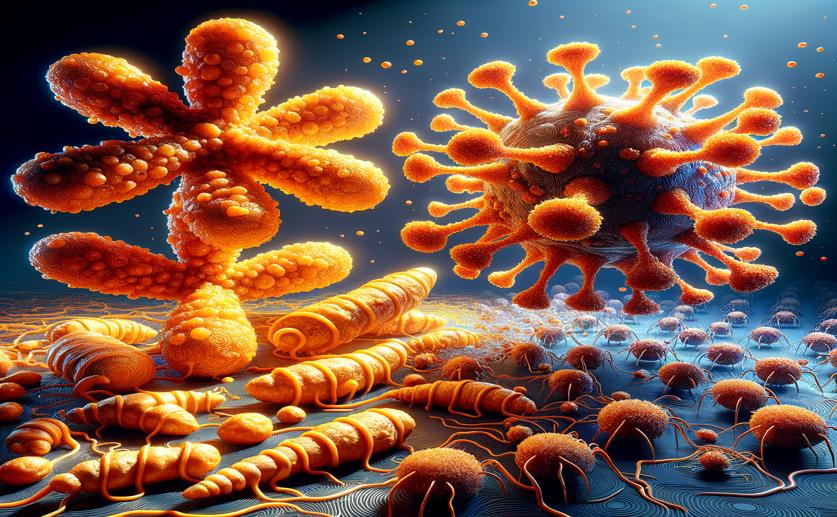
Exploring How Turmeric Compounds Fight Parasitic Disease
Jim Crocker
30th March, 2024

Image Source: Natural Science News, 2024
Key Findings
- Scientists identified three turmeric compounds that may block a key enzyme in leishmaniasis-causing parasites
- The compounds showed strong potential to inhibit the enzyme, crucial for the parasite's survival
- This discovery could lead to new treatments for leishmaniasis and other similar tropical diseases
References
Main Study
1) Computational investigation of turmeric phytochemicals targeting PTR1 enzyme of Leishmania species.
Published 30th March, 2024
https://doi.org/10.1016/j.heliyon.2024.e27907
Related Studies
2) Drug repurposing and human parasitic protozoan diseases.
3) Latest developments in molecular docking: 2010-2011 in review.
4) A small-molecule cell-based screen led to the identification of biphenylimidazoazines with highly potent and broad-spectrum anti-apicomplexan activity.



 24th January, 2024 | Greg Howard
24th January, 2024 | Greg Howard